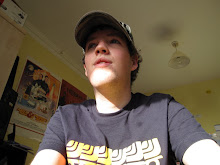To give my project more depth and detail I have decided to trawl the internet and any other media source to find relevant photography which appeals to the style of photograph I want to produce as a final image, these are some of the sources I have found so far:
 This photograph shows another way of shooting star trails, without using Polaris (The North Star) or Sigma Octantis (The South Pole Star) as a focal point as such in the background, as a result it gives sweeping trails of starlight which sweep according to each star rotation ( The rotations are clear in the photograph which was taken in Morocco, close to the equator).
This photograph shows another way of shooting star trails, without using Polaris (The North Star) or Sigma Octantis (The South Pole Star) as a focal point as such in the background, as a result it gives sweeping trails of starlight which sweep according to each star rotation ( The rotations are clear in the photograph which was taken in Morocco, close to the equator).
Photo Fact File
Photo Fact File
- Shot in Morocco
- 3 Hour Exposure
This photograph shows how the night sky changes depending on where and when the photograph is shot, as I will achieve different results here in Devon, than this photographer has done here in Morocco, much nearer to the equator than I am. Although I am finding it quite interesting to see how photographs vary when taken in different parts of the world, maybe I will be inspired to travel to these locations and try for myself :)
The next photograph was taken in Italy, looking up at Polaris from (allegedly) a hotel room window in Alto Adige, Northern Italy.
It shows a chalet style building in the foreground with a large outcrop of rock in the background, which is lit by light from the chalet and from the night sky.
The photo was taken over a three hour period which is evident due to the rotation shown in the background, the viewer is drwan into the swirling stars by the chalet which first grabs your attention, then the eye is led up the rock into the stars above.
I could produce a photograph featuring th rotation of stars around Polaris in Devon so it is quite likely that my photographs will look like this one in terms of background stars, foreground subjects may be less dramatic as I simple do not have an outcrop of rock like this to work with in Devon unfortunately.
These next two images show how length of exposure time can vastly change how the star trails appear, if at all. Depending on the effect you want to achieve, shutter opening time has to be considered with ISO setting to set the camera up correctly, have a look at the two examples:
The effect is clear in the way the stars appear to have rotated on the longer exposure to give effective star trails which show the path of the stars.
As I continue to work through the project, I will experiment with the shorter and longer exposure times to see which effect I prefer.
Images sourced from: www.danheller.com

No comments:
Post a Comment